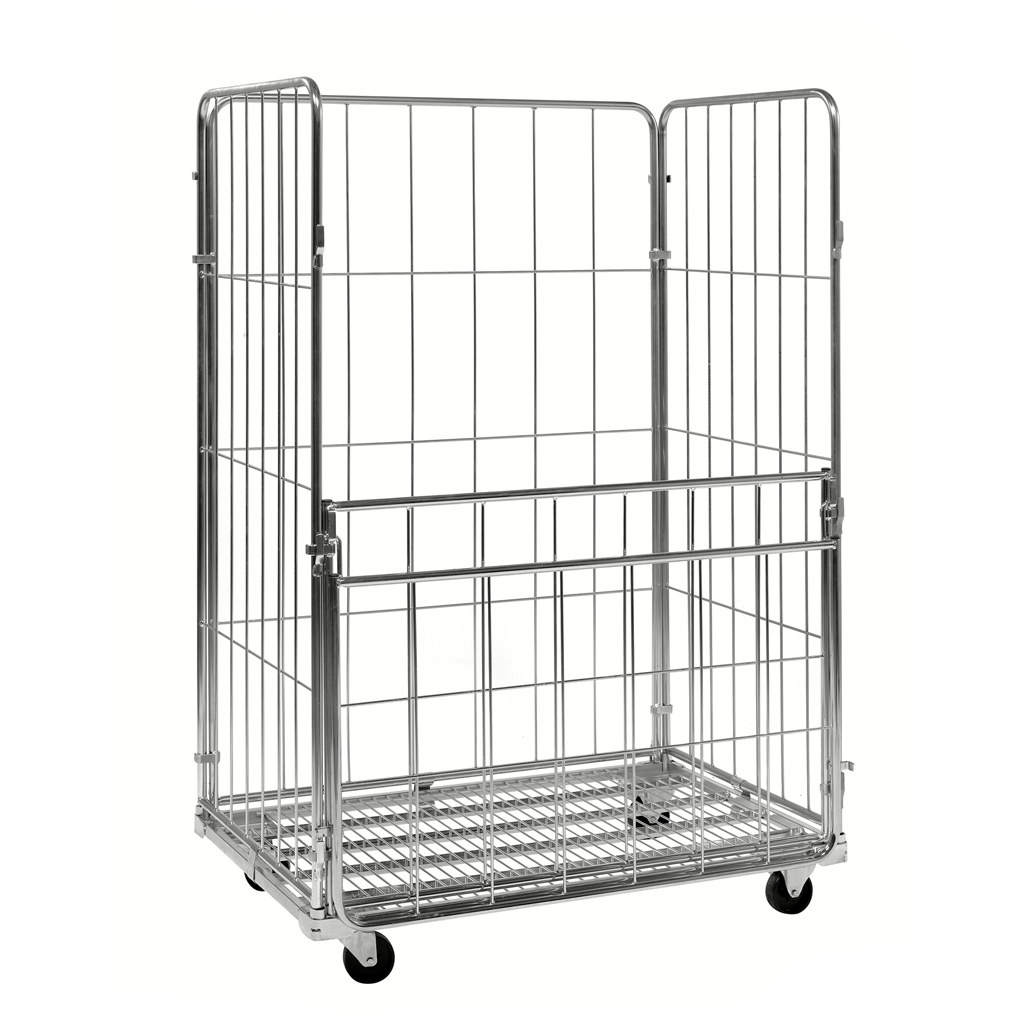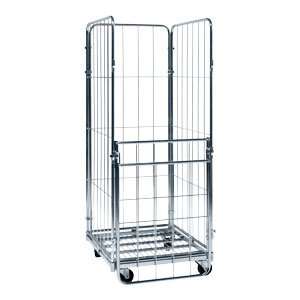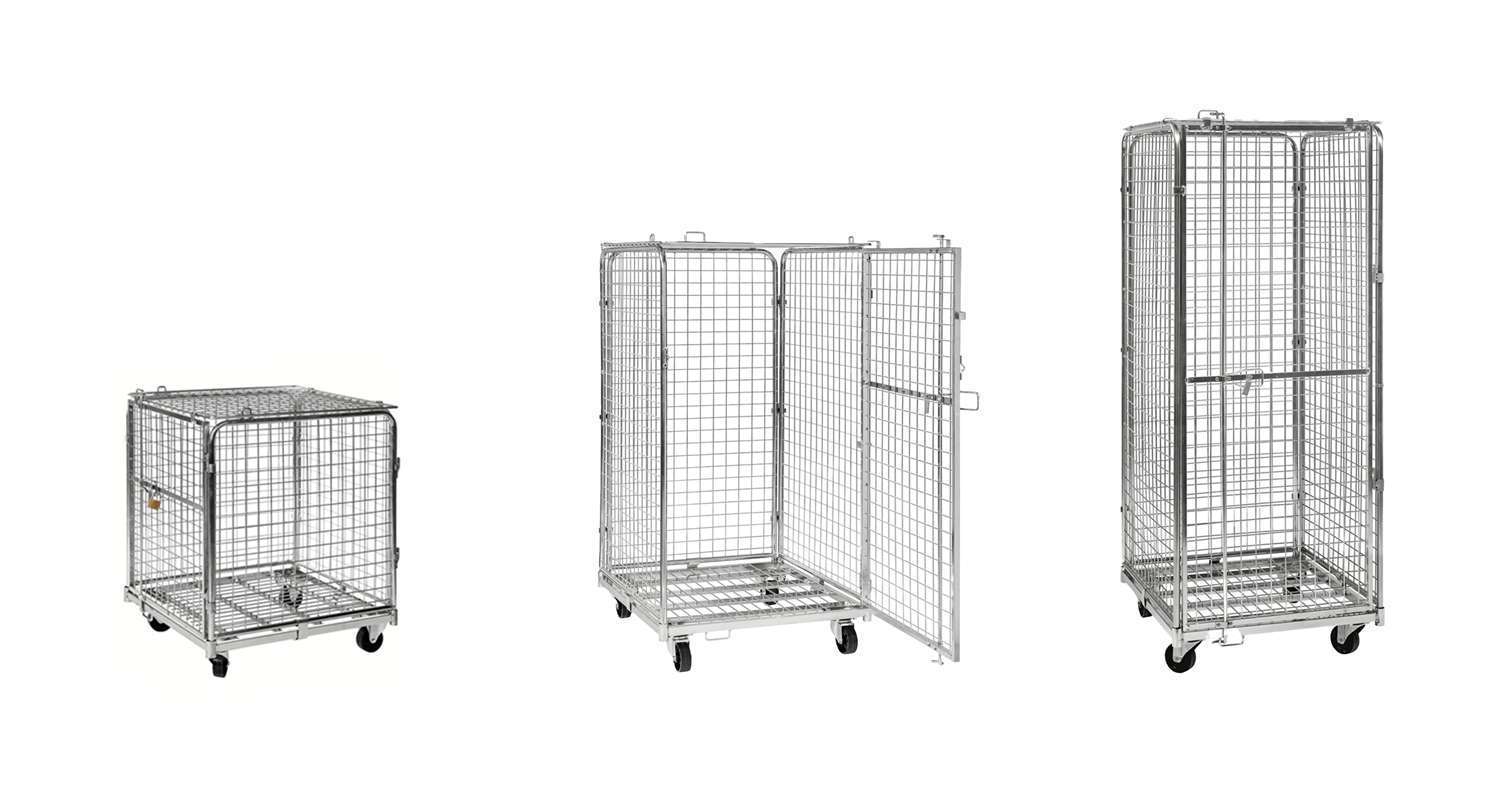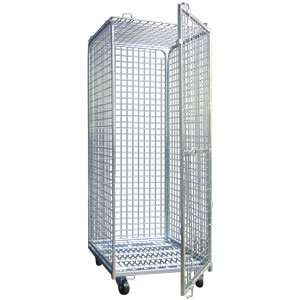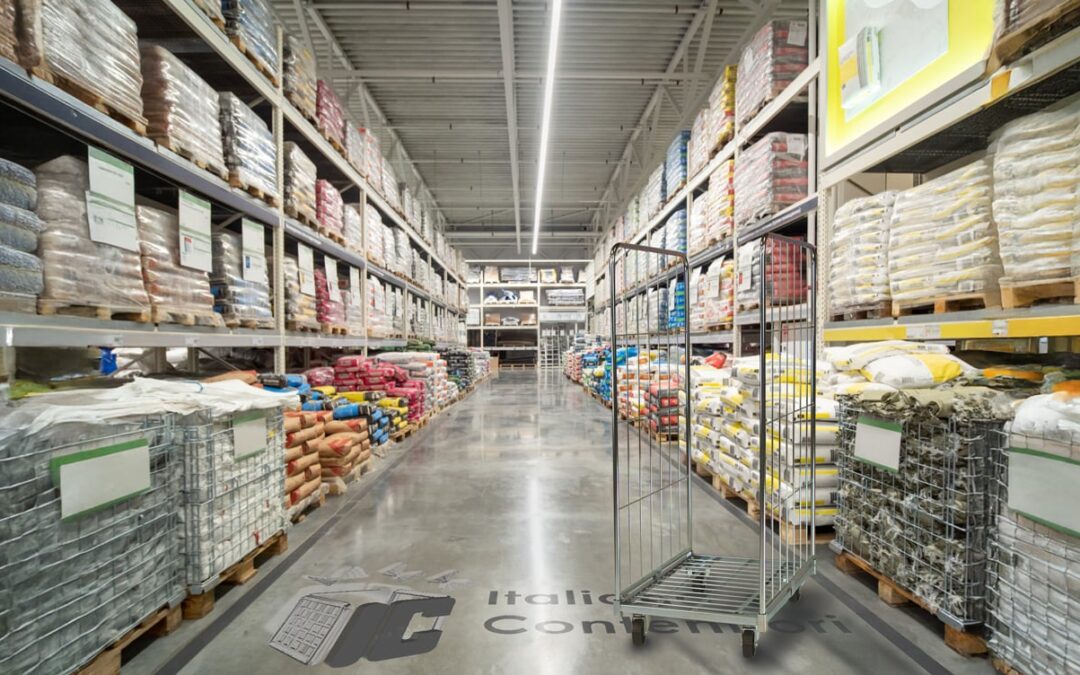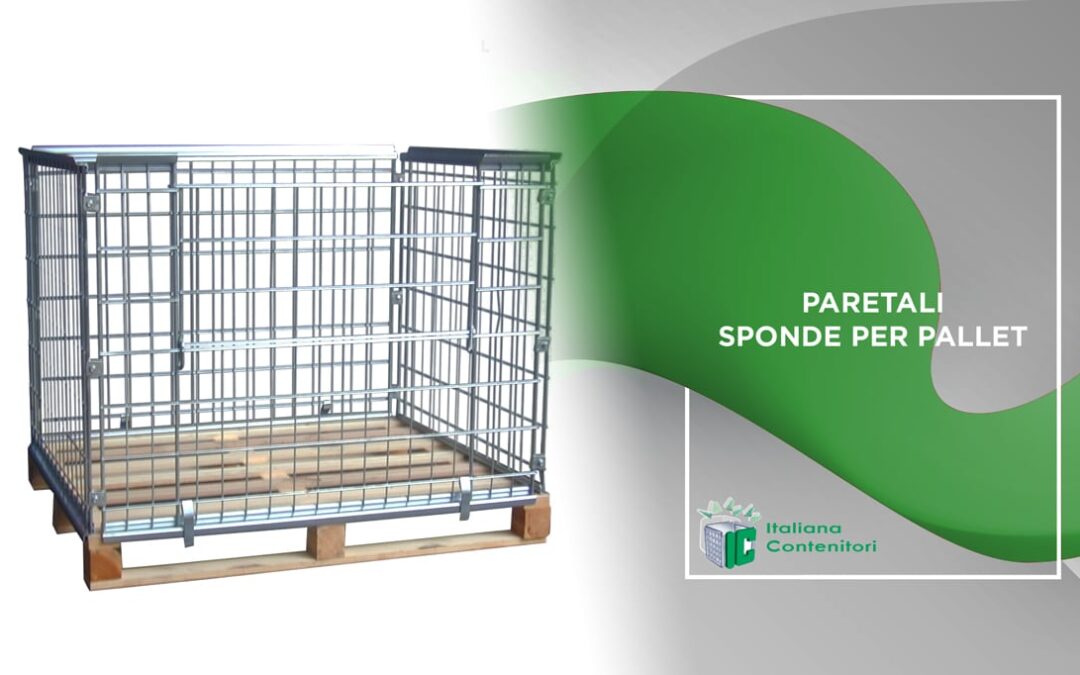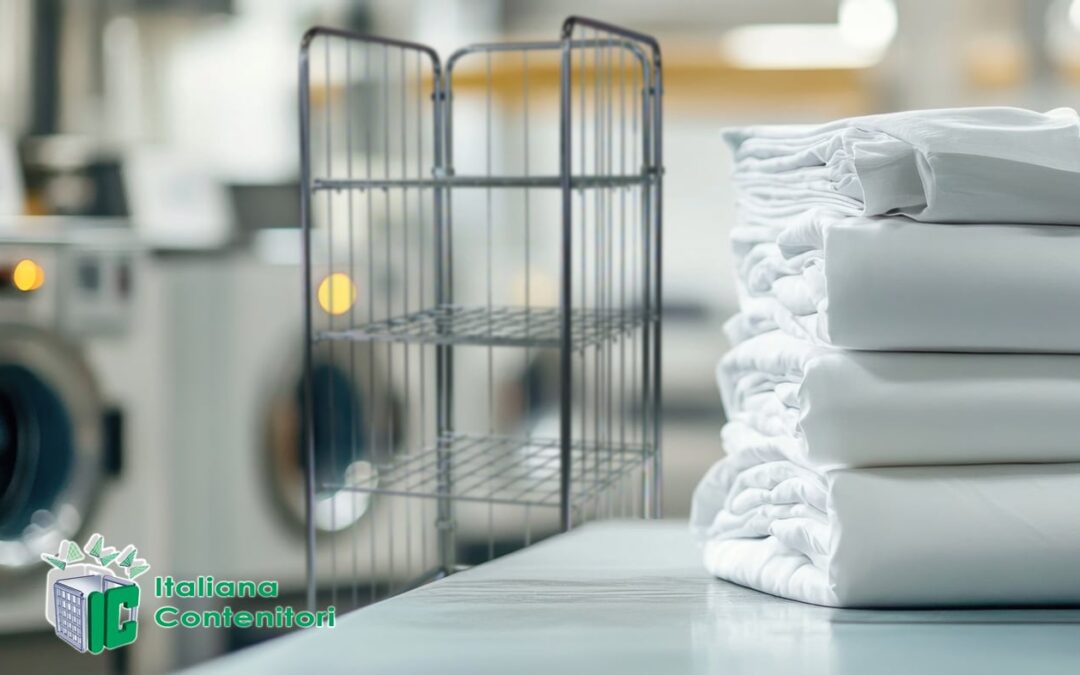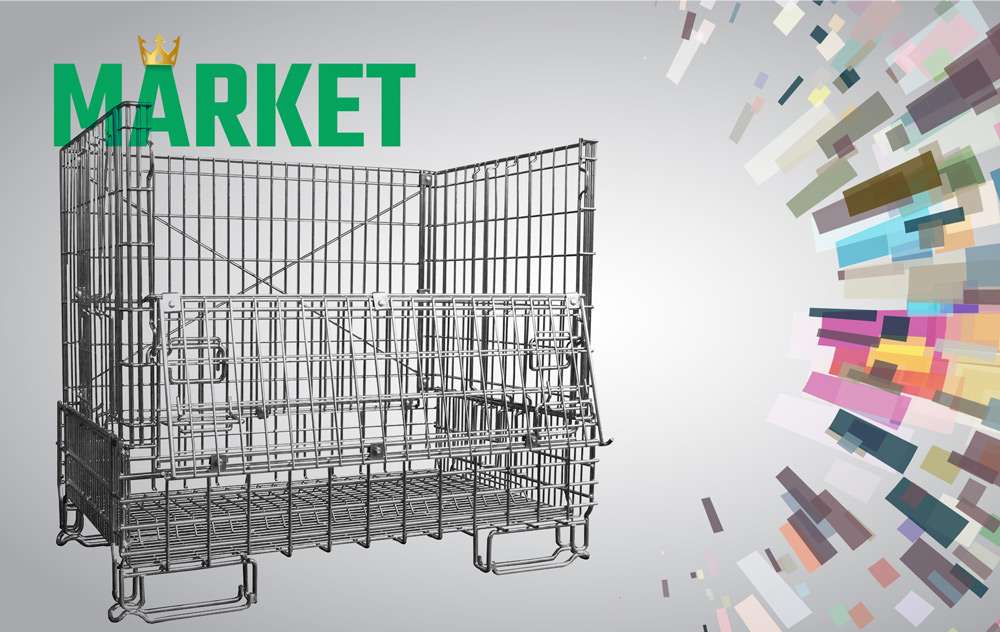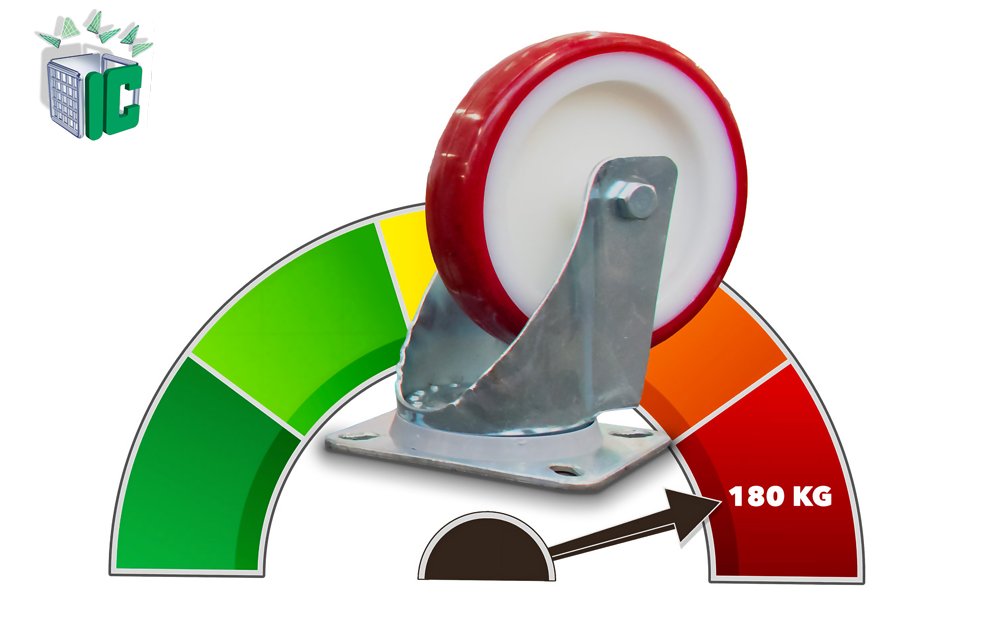Choosing the Roll Container best suited to your company’s needs is a process that requires the careful evaluation of a number of variables. In this article we will guide you in choosing the perfect Roll Container, analyzing all the key features to ensure efficient transportation and safe handling of your goods.
We will find out together what aspects to consider so that your next Roll Container will perfectly meet your company’s needs: size, loading capacity, tailboard configuration, mesh weave, and even empty space management. Here are the features that can guide your choice toward the perfect Roll Container.
Don’t have time to delve deeper and know all the key features of a Roll Container? Take the test ROLL IT RIGHT! and find the cart that meets your needs in just a few clicks!
TABLE OF CONTENTS
Trolley size, maneuverability, and weight
Load capacity and wheels
Number of sides: 2 to 4 with door and folding door
Mesh width: protection of small or valuable goods
Vacuum space management: compenetrable or bottleable Roll Containers
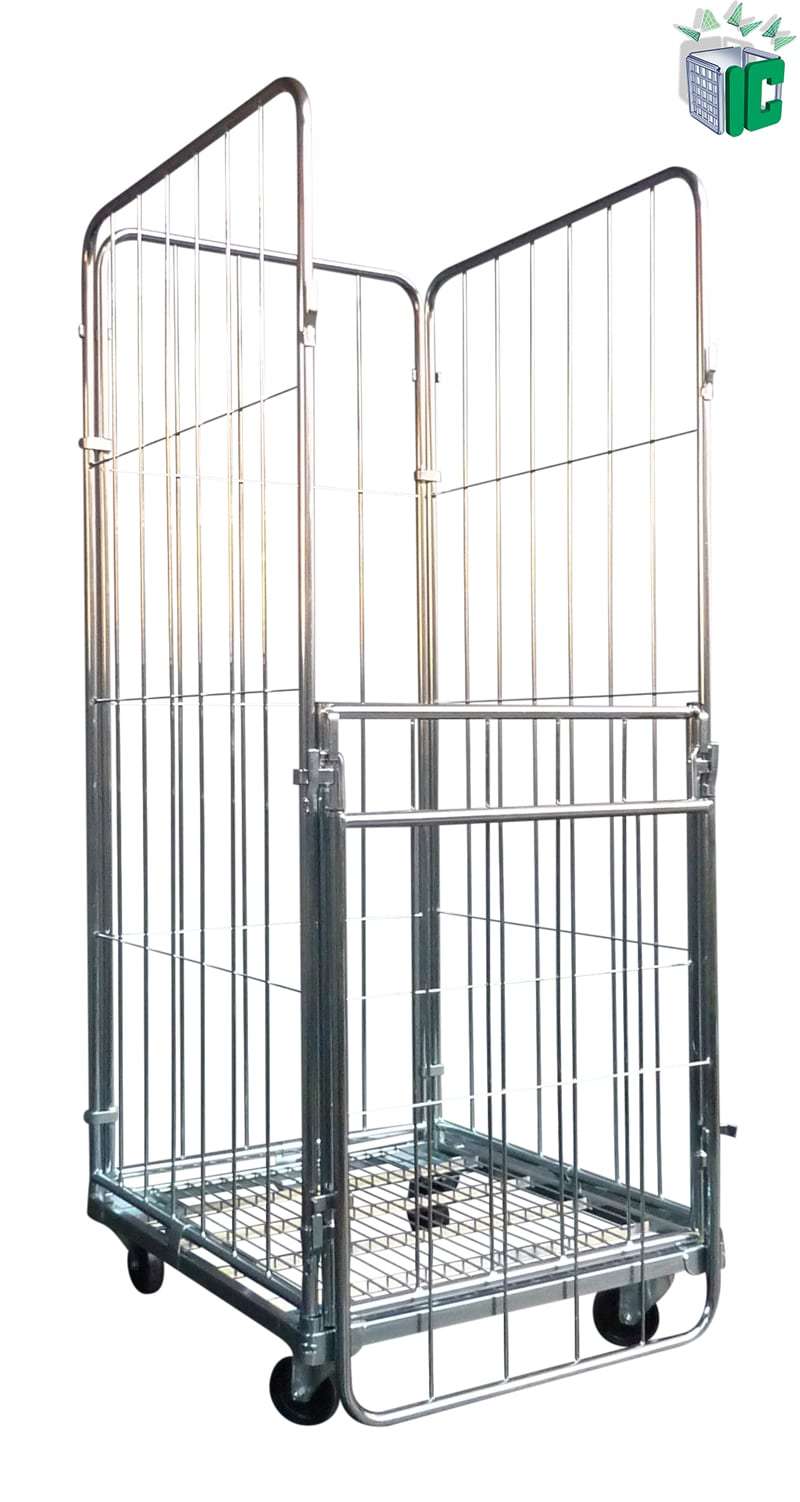
Trolley size, maneuverability, and weight
Choosing the right Roll Container depends on the specific needs of each company and the environment in which it will be used. From small and compact versions, ideal for tight spaces such as pharmacies and healthcare facilities, to standard Roll Containers, perfect for optimizing space in trucks, to MAXI and JUMBO models intended for bulky loads in large warehouses and logistics centers. In this section we will explore the features and benefits of each solution, helping you identify the most suitable model for efficient and safe logistics management starting with size.
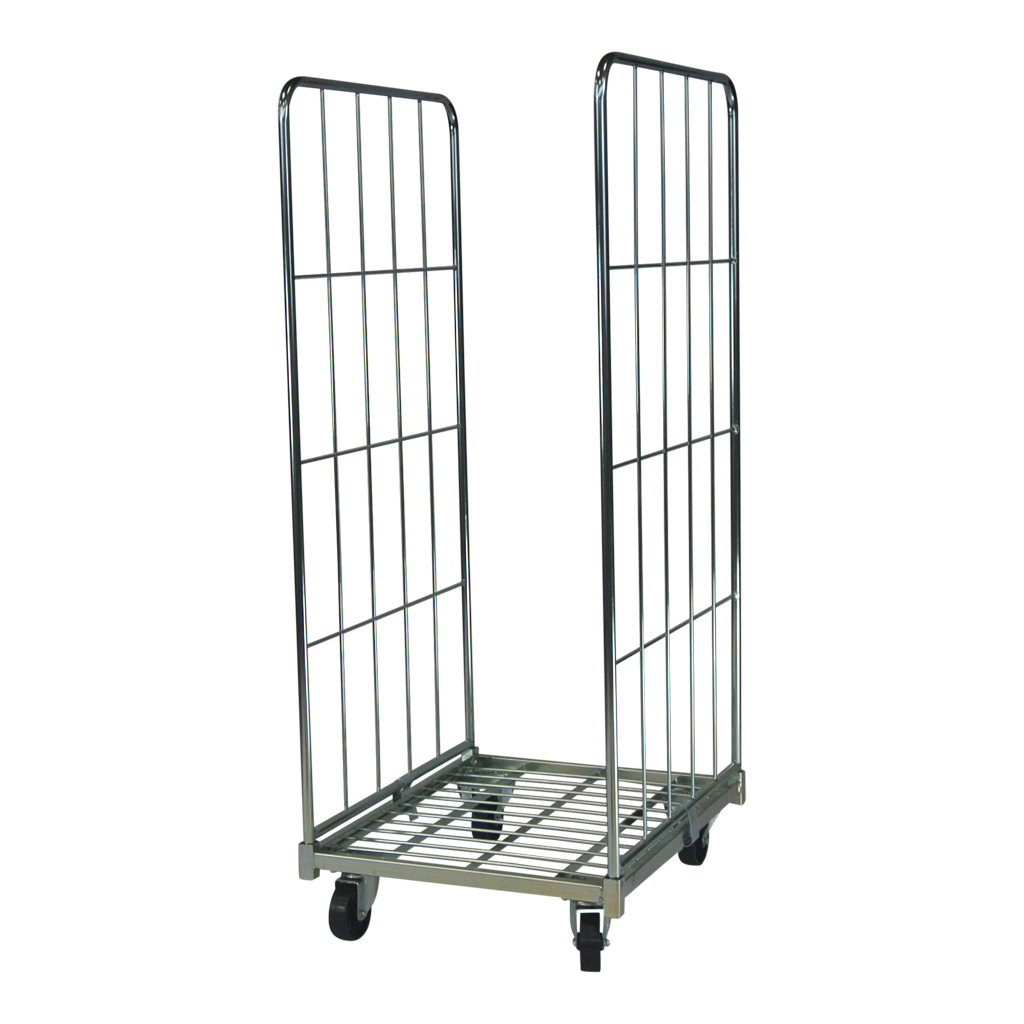
Roll Container small and compact
Small and compact Roll Containers, with a 60×74 base and variants, are ideal for space-constrained environments such as pharmacies, small stores, residential and health care facilities. Their small size makes them perfect for maneuvering nimbly between narrow aisles and accessing elevators, facilitating the transport of goods in settings with limited interior space.
The small version of these 152 cm high Roll Containers is designed to be easily loaded onto courier vans, and allows loading and unloading operations without having to tilt the cart. Due to their compactness, they are a flexible solution for those managing logistics in environments where space is a precious resource.
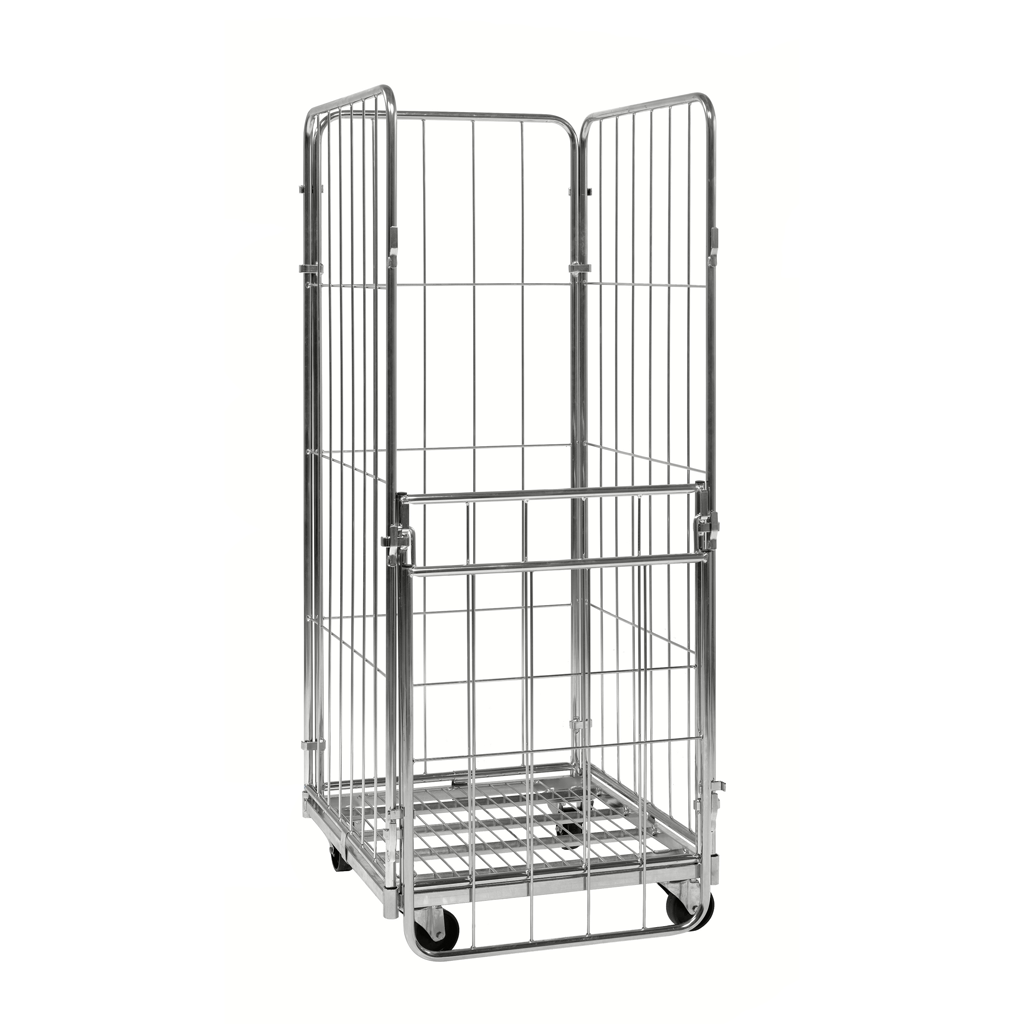
Roll Container Standard
The Roll Container Standard, with a base of 72×80 cm (and variants), is one of the most popular models due to itsversatility, agility and standard dimensions that allow full use of space when loading onto trucks. This size is ideal for companies operating in logistics and large-scale retail trade (GDO), where rational management of available space helps reduce costs and increase operational efficiency.
With an excellent balance between loading capacity and maneuverability, this model is perfectly suited for medium-sized warehouses, supermarkets and chain stores. The standard Roll Container ensures safe and quick transportation of goods, facilitating internal handling and improving logistics flow between the warehouse and sales aisles.
Roll Container MAXI
Roll Containers MAXI, with dimensions up to 120×100 cm, are designed to handle large loads and high volumes of goods. These Roll Containers are the ideal choice for storage warehouses and logistics centers that need to handle bulky items such as household appliances, large boxes or industrial materials.
Despite their greater load capacity than standard models, Roll Containers MAXIs maintain good maneuverability, allowing them to optimize transportation without compromising on efficiency. Because of their wide format, they are suitable for those who need to reduce the number of trips between warehouse and transport vehicle or point of sale, and are perfect for sectors such as manufacturing and large-scale logistics.
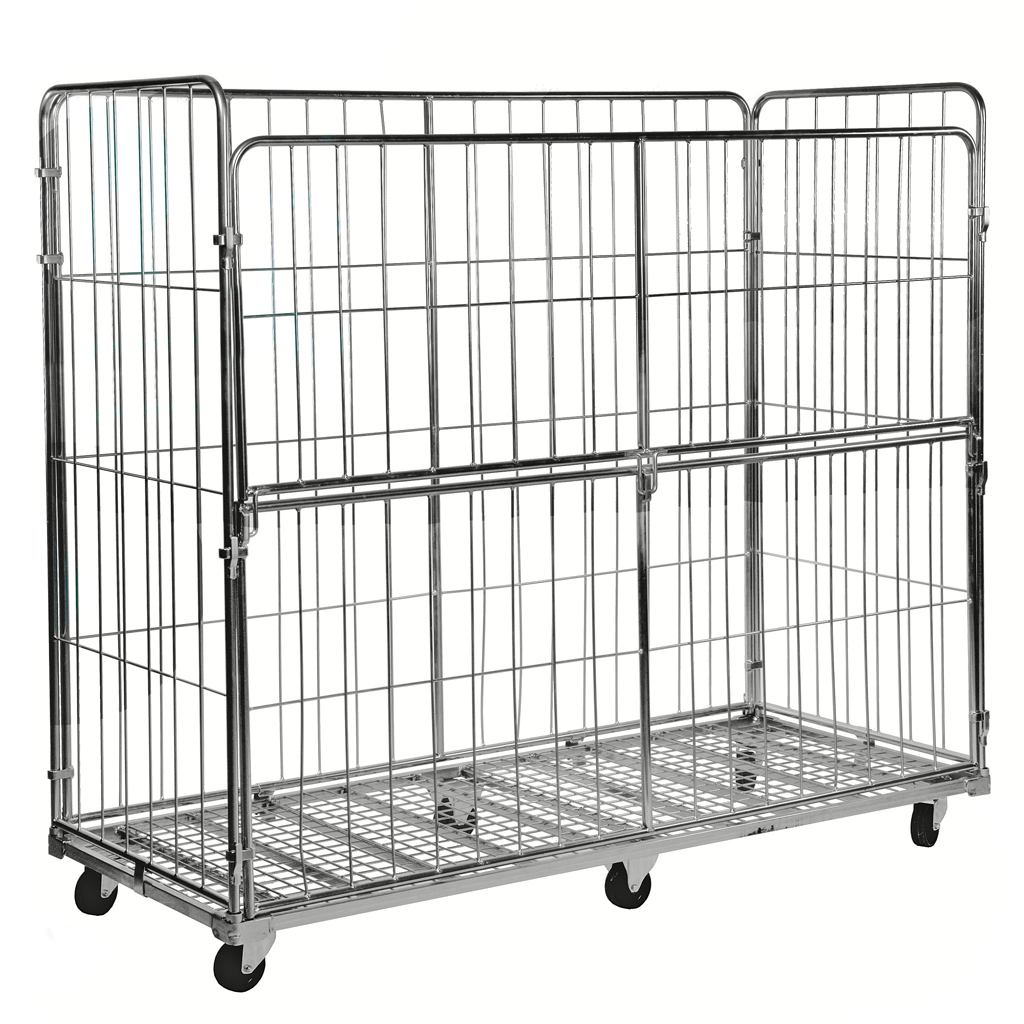
Roll Container JUMBO
The Roll Container Jumbo, with a 200×80 cm base, is ideal for handling bulky loads such as pallets and bulky equipment. Perfect for large warehouses and logistics centers, it offers high load capacity and provides stability due to its sturdy design. Despite its size, it ensures safe transportation in environments with large operating spaces.
Load capacity and wheels
The load capacity of a Roll Container is closely related to the quality and type of wheels used. The wheels not only determine how much weight can be transported, but also influence ease of movement, stability and safety during handling operations. To meet different usage needs, Italiana Contenitori offers four different Roll Container wheel kits, each designed to meet specific operational needs, ranging from noise reduction to use on uneven surfaces or for particularly heavy loads.
Standard Wheel Kit
Equipped with polypropylene wheels, the Standard Kit offers a maximum load capacity of 400 kg. It is the most economical and versatile choice, ideal for everyday use on smooth surfaces inside warehouses or stores.
Silent Wheel Kit
With gray elastic rubber wheels, this kit is perfect for environments where silence is critical, such as hospitals and nursing homes. The maximum load capacity is 400 kg, combining smooth movement with noise reduction.
Intenso Wheel Kit
Designed for heavy-duty use, it uses nylon wheels that offer wear resistance even on the most demanding surfaces. Maximum load capacity is 400 kg, ideal for industrial applications and warehouses with high traffic.
Strong Kit
The best choice for heavy loads, with nylon polyurethane wheels. The Forte Kit supports up to 600 kg, ensuring sturdiness and stability even on uneven surfaces and under severe working conditions.

Number of sides: 2 to 4 with door and folding door
The configuration of the sides of a Roll Container plays a crucial role in the efficiency and safety of cargo transportation. Depending on the type of cargo, there is a choice of 2-, 3-, or 4-sided Roll Containers, each with specific advantages for different applications. The choice of the number of tailgates not only determines the level of cargo containment, but also affects accessibility, ease of loading and unloading, and protection of items during handling.

Roll Container with two sides
- Logistics warehouses: Perfect for transporting pallets and bulky well-packed items.
- Distribution of large household appliances: Suitable for washing machines, refrigerators or similar items.
- Waste and recycling: Ideal for transporting bulky waste such as cardboard, plastic, or materials for recycling, where side protection is sufficient to keep the load stable
Roll Container with three sides
Roll Containers with 3 sides offer additional side protection without compromising accessibility. They are suitable for goods requiring a higher level of containment than 2-sided models.
Examples of use:
- Shelf replenishment in stores: used for rapid transport and replenishment of products on the shelves.
- Inventory management: perfect for moving and organizing items during inventory operations.
- Bulk item distribution: useful for transporting unpackaged materials, such as vegetables or similar goods, that require partial containment.
Roll Container with 4 sides and folding door
Roll Containers with 4 sides, equipped with a tipping door, are the ideal choice for transporting delicate goods or goods that need full protection. The tipping door facilitates access to the cargo and speeds up loading and unloading without the need to open the Roll Container door.
Examples of use:
- Transportation of valuable or electronic goods: suitable for bulky, high-value items that require protection from damage or theft.
- Industrial laundries: used for safe transportation of laundry, prevents garments from falling or becoming contaminated during transport.
- Food and health care industry: ideal for fresh produce or medical supplies, requiring complete containment and easy access.
Mesh width: protection of small or valuable goods
The choice between dense mesh and standard mesh in Roll Containers depends mainly on the nature of the cargo and the level of protection required. Dense mesh is used to store and transport small or valuable goods that require additional protection, preventing items from slipping or being damaged during transport. This type of structure is particularly suitable for pharmaceuticals, electronic component transportation, and retail of valuable items, and provides additional security and cargo integrity.
In contrast, Roll Containers with standard mesh are ideal for handling less delicate products, such as commonly used goods and items, industrial artifacts, and waste or scrap, for which no special protection is needed.
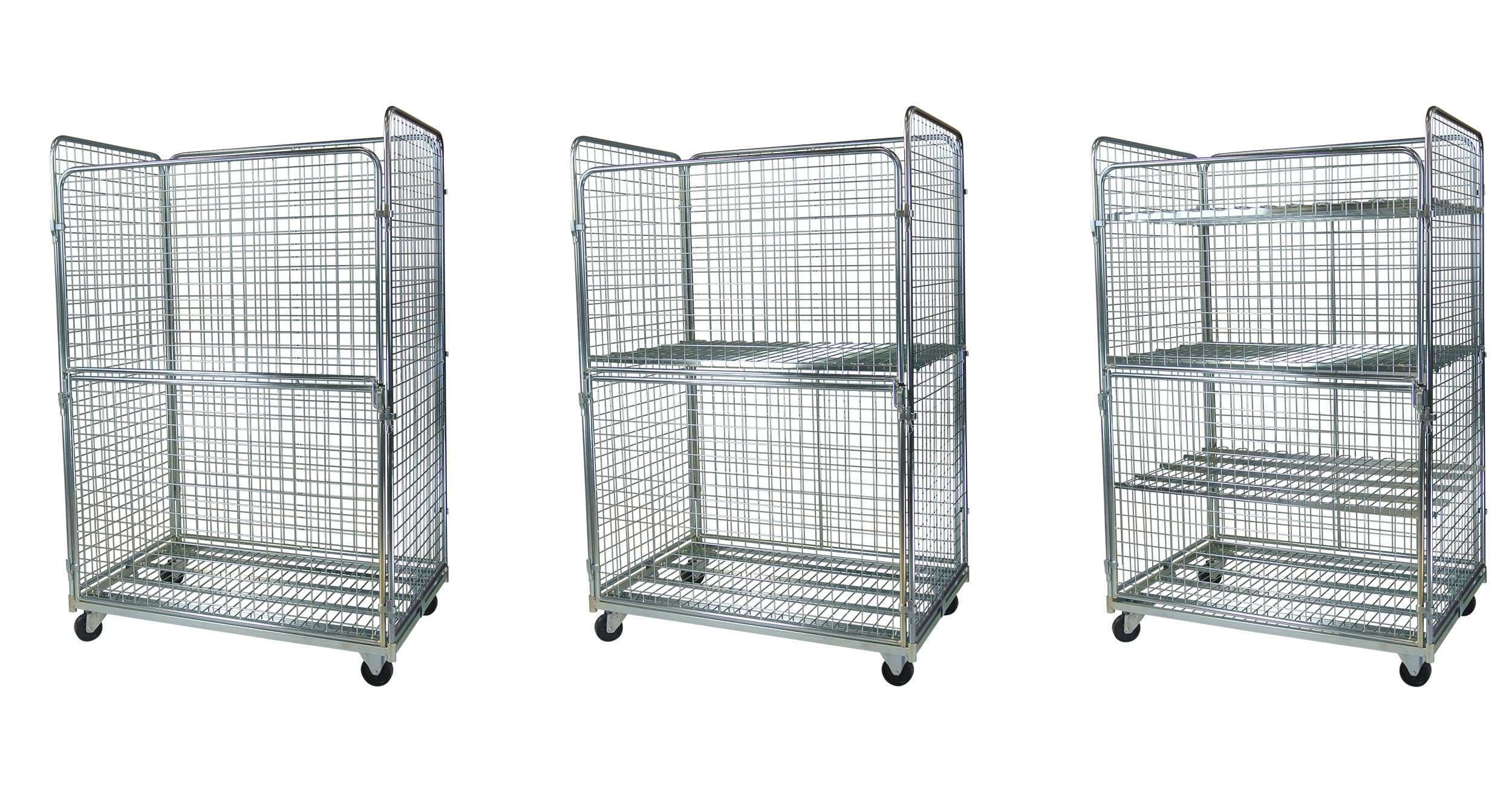
Optimizing the loading of Roll Containers with multiple shelves
The dense mesh allows for more efficient load distribution, especially with small and valuable goods, because a shelf can be placed every 5 cm in height. Due to the strength of the structure, various levels of goods can be organized, maximizing the use of vertical space without ever sacrificing safety. Small and lightweight items, such as electronic components or medical items, can be divided over several shelves, with the assurance that they will not slip out of the openings.
Why is dense mesh used in Roll Containers?
Dense mesh offers greater protection than wide mesh, and prevents small or fragile items from falling or being damaged during transport. Robustness and density of dense mesh offer additional security for valuable goods, as the metal structure protects the contents from external impacts without compromising visibility and hindering unauthorized access.
In what areas is dense mesh most commonly used?
Dense mesh is particularly used in the logistics and manufacturing sectors, where it is essential to ensure the safety and integrity of goods during transport. It is also popular in the retail sector, especially for transporting electronics, valuables or fragile items. The pharmaceutical and food sectors also benefit from dense mesh, as this type of Roll Container enables compliance with stringent hygiene and safety requirements.
Vacuum space management: Roll Containers that can be interpenetrated or bottled
Roll Containers that can be interpenetrated or bottled are designed to optimize space in warehouses when not in use, a significant space-saving advantage over traditional models. Intelligent design allows empty Roll Containers to fit inside each other, dramatically reducing clutter at idle times and improving operational efficiency in environments where space is limited.
These models, widely used in logistics and large-scale distribution, allow large quantities of empty Roll Containers to be stored while occupying only a fraction of the space that would be needed. Roll Containers can reduce the empty footprint by up to 75%, thus optimizing storage and handling operations, and also facilitating transportation by truck or in small warehouse areas.
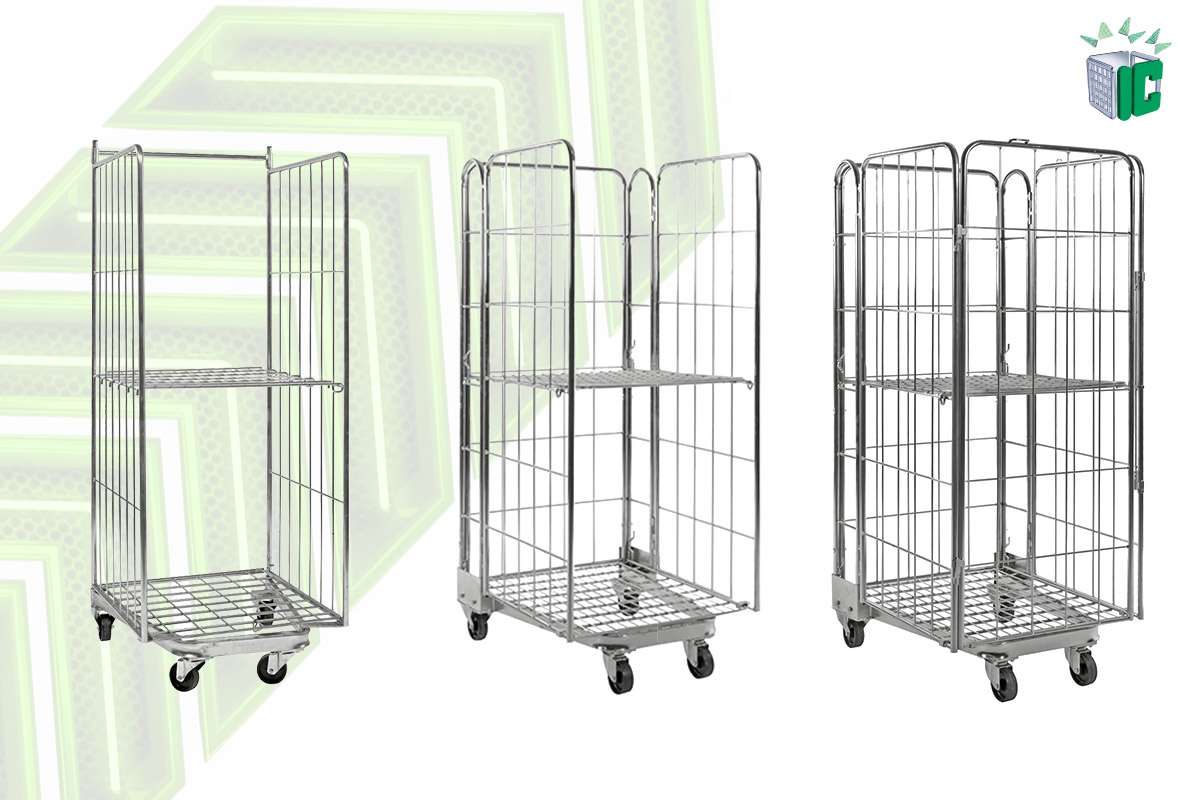
Roll Containers are ideal for companies that operate with large handling volumes, such as in large-scale retail trade, distribution warehouses or logistics centers. In addition to their ability to optimize space, they are also easy to maneuver, and provide a significant reduction in operating costs due to the ease with which they are handled and stored.

